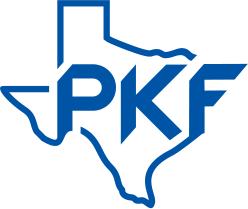Although the redesigned Form 990 has been out since 2007, organizations are still adjusting to its heightened reporting requirements and inherent intricacies. The instructions to Form 990 contain detailed guidance and specific definition of terms used throughout the form. Organizations, as well as their tax preparers, should be aware of certain areas of Form 990 that are frequently completed incorrectly. This article highlights the common pitfalls of Form 990 that relate to revenue and contributions, compensation of officers/directors/trustees and functional expenses.
Part VIII – Statement of Revenue
Proper classification of revenue is an important aspect of Part VIII – Statement of Revenue. All sources of revenue, including cash and noncash, are reported on Part VIII and must be categorized appropriately. Avoid these common errors.
Reporting amounts in the incorrect column. Part VIII is categorized in three columns: related or exempt function revenue, unrelated business revenue and revenue excluded from tax under sections 512-514. All revenue, except contributions, gifts, grants and similar amounts, must be categorized in one of the three columns.
Not reporting noncash contributions. Organizations tend to forget to report noncash contributions. This oversight may also lead to the failure to complete the more detailed reporting in Schedule M – Noncash Contributions. If the organization had noncash contributions in excess of $25,000 or received contributions of art, historical treasures or similar assets, then Schedule M may be required.
Improperly reporting program service revenue. Program service revenue should not be included as contributions on Line 1. Organizations that receive revenue from their program services, as well as from contributions, must report these monies separately. Program service revenue also should be reported in Part VIII with the applicable business code identified. Furthermore, program service revenue should be categorized as related/exempt function revenue, unrelated business revenue or revenue excluded from tax, under a specific code section.
Not identifying unrelated business revenue. Unrelated business income (UBI) often throws organizations for a loop. It’s important to identify UBI activities in order to properly report the revenue. UBI is the income derived from any trade or business activity that is regularly carried on, and not substantially related to, the organization’s exempt purpose. Revenue from unrelated business sources should be properly reported in column (c) of Part VIII. Organizations with UBI may be required to file Form 990-T Exempt Organization Business Income Tax Return and pay the related taxes.
Reporting the incorrect amount for fundraising contributions. Part VIII has a separate line item for contributions from fundraising events. Oftentimes, organizations will either report the incorrect amount here or leave the line blank altogether. It’s important to understand what amount should be reported on this line and from what type of event. Fundraising events are events conducted for the sole or primary purpose of raising funds for the organization’s exempt activities. Such events include, but are not limited to, dinners, auctions and golf tournaments. Only the contribution portion of revenue is reported on this line. This leads us to the next section of Form 990 that commonly contains errors: Schedule G.
Schedule G – Fundraising and Gaming Activities reports detailed information about fundraising and gaming activities. If an organization has more than $15,000 in contributions from fundraising activities, it must complete Part II of Schedule G.
Proper documentation while planning and operating a fundraising event is essential to ensure accurate information is available to prepare the tax return, so a red flag on Schedule G is inaccurately reporting the contribution portion of revenue. Typically, fundraising events are easily identified. However, the contribution portion of fundraising event revenue isn’t as easily determined. The contribution portion of gross receipts is the excess of money given over the fair market value (FMV) of goods or services that the donor received.
For example, a supporter pays $150 for a dinner event ticket. The FMV of the meal that the donor received is $25. Therefore, the contribution portion would be $125 ($150 minus $25). The biggest mistake organizations make in determining the FMV is including all costs of the event (entertainment, décor or facility rental) in the FMV. Organizations should realize that FMV does not necessarily equal the cost of the event.
Part VII – Officers, directors, trustees and key employees (ODTKE)
Form 990 requires reporting of individuals who hold certain positions within the organization. In addition, information about compensation related to such individuals is reported on Part VII. The following reporting errors are commonplace in this section.
Improperly reporting compensation. Reportable compensation that should be reported on Part VII is the amount on Form W-2 box 1 or box 5 (whichever is greater), or the amount on Form 1099-MISC box 7. For fiscal year organizations, the amount reported in Part VII might not agree with salary expense on the organization’s financials or Part IX. The reportable compensation listed on Part VII comes from the W-2 or 1099-MISC issued for the calendar year ending with or within the organization’s tax year. Oftentimes, this amount will not coincide with the fiscal year financials.
Incomplete listing of ODTKE and highest compensated employees. A common mistake on Part VII is failing to report all required persons. Understanding the definition of each position that’s required to be reported is crucial. Form 990 instructions give detailed definitions and examples.
Not checking the appropriate position(s). The instructions for this section clarify each position title. Some titles include persons that the organization wouldn’t normally consider. For example, the 990 instructions specifically include the top management official (executive director, CEO) and the top financial official (treasurer, CFO) in the definition of officer. In addition, to determine a key employee, there is a compensation and responsibility test. Furthermore, a key employee cannot also be an officer, director or trustee. Similarly, highest compensated employees have a compensation threshold and also cannot be an officer, director, trustee or key employee.
Part IX – Functional Expenses
The statement of functional expenses contains three categories: program service expenses, management and general expenses, and fundraising expenses. This section illustrates for which purpose the organization is spending its resources. Ideally, most resources should be expended for program services (exempt purpose or function of the organization).
Incorrect allocation among functional categories. Many times, organizations do not properly allocate expenses among each functional category; instead, expenses are solely reported in the program service column. The organization should use any reasonable method to allocate expenses. Compensation of ODTKE, salaries and wages, payroll taxes, and fees for services are among the expenses that are often not apportioned properly.
Failure to separately report compensation to disqualified persons. Frequently, organizations fail to engage in the process of identifying disqualified persons. Form 990 instructions contain specific definitions and examples to determine if a situation or relationship exists that would cause a person to be disqualified. This may also lead to the omission of Schedule L, which reports transactions with interested persons.
Operating a tax-exempt organization, preparing Form 990 and understanding its underlying principles are not easy. The tax return is heavily informational with financial reporting and specifically defined terms peppered throughout the form. An organization required to file Form 990 should engage a knowledgeable preparer to help it navigate and understand the intricacies and traps contained in Form 990.
Nicole Riley, CPA, is an audit senior manager for PKF Texas. Contact her at nriley@pkftexas.com.

